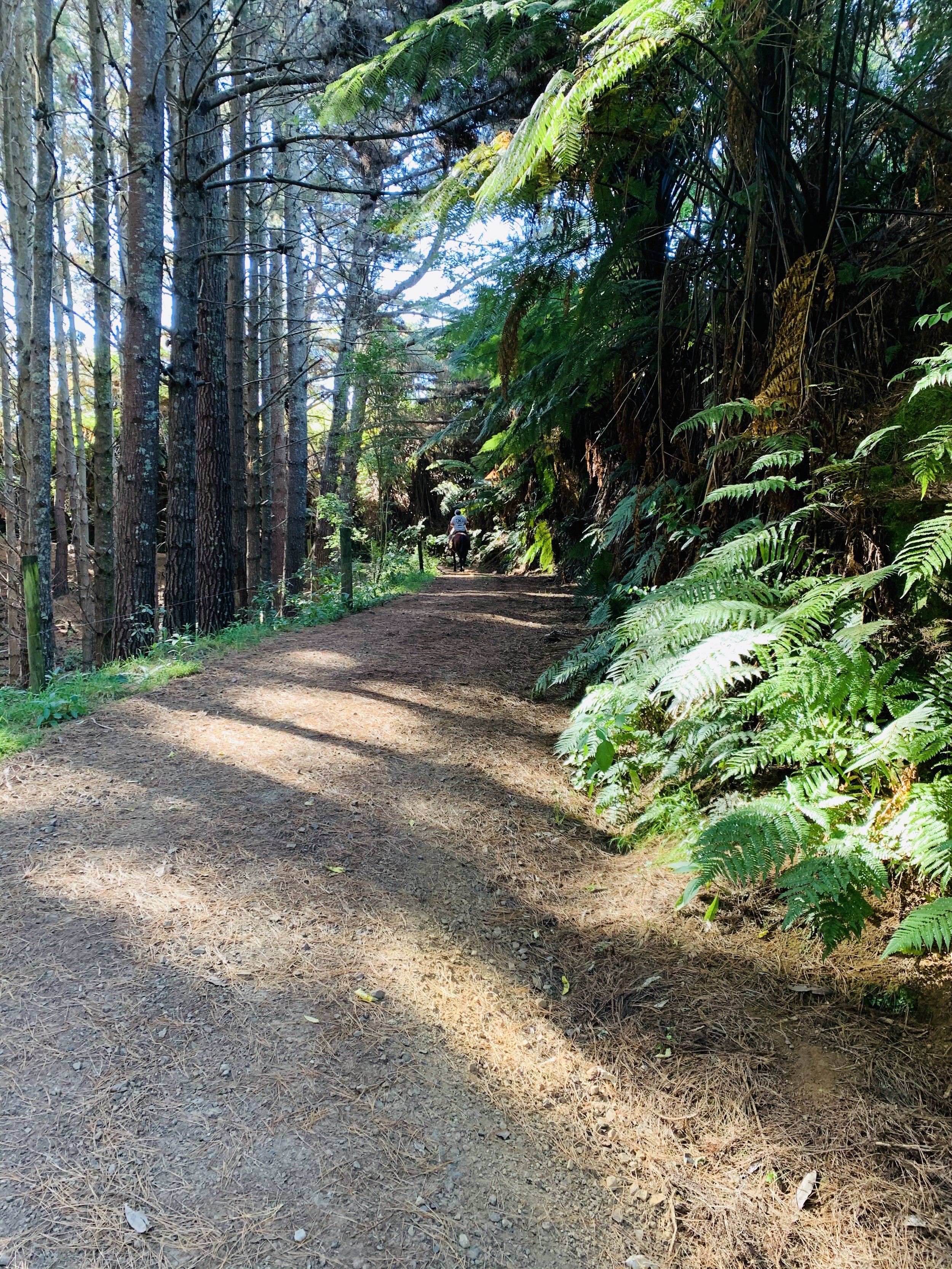
Te Whenua Hūmārie -
The Land of Peace
This was the piece of land that was the catalyst for this kaupapa. This land had been perpetually leased for decades and was in such a sad state the work seemed overwhelming.
After doing a survey of the property and speaking with kaumātua on known sites of significance we started a 3 year project to remediate the land by removing hundreds of acres of gorse, blackberry, box thorn and lupin. This was all done without the use of herbicides.
Preparing for Regenerative Housing
After the completion of preparing the land we replanted native species that would have been plentiful pre-human occupation. This is an ongoing project and we continue to plant every Mātariki (Māori New Year)
Gentle, pervious roading and natural wetlands were created.
“We could have just gone straight through the place, but we wanted to listen to the land and have it tell us what we should do, we listened to the stories of our ancestors to learn the heartbeat of the place. Our plan was to be as responsive to the needs of the whenua/land as possible. Placing the needs of the land, before cost efficiency was a bit of a mind bender for some contractors but we wanted to follow our values first”
- C. Packer
Whenua Lead
Areas were designated for community gardens, access to mahinga kai species and a multi-year planting plan were created.
Welcoming our first villagers
Standards for nano and tiny house solutions had been well-established over 4 years of preparing. The team had built prototypes using a number of methods including structural insulated panel, chosen for its cost effectiveness. We found a number of issues with SIPS building including that it was not good for respiratory health. We now recommend a high performance building method that is very cost effective.
“During the prototyping phase we found the SIPS method, while quick was extremely messy and impactful. I was also uncomfortable with the embodied carbon of the material, and that it created major condensation issues. Māori are particularly vulnerable to respiratory illnesses so wanted a solution that would be cost effective but also answer the health problems too.
Thats why we settled on a high performance building system - an option that was renewable, carbon-neutral and would prevent dampness in the home.”
-K. Okano
Founder
When advertising for the first village opened, we were overwhelmed with applications. We had over 119,000 interact with our first Facebook messaging and had over 1800 sign up to join the village. The process of selecting people that weren’t just looking for beach or holiday home, who really wanted to be part of a regenerative community, people who understood that this was about improving the environment and social cohesion through housing.
Impact At a Glance
100% of our product options are classified as affordable housing
100% of all village power sources are solar generated
98% Client retention rate
90% of sole occupations = women
100% of our clients report reduced energy-related expenses
Project at a glance:
The Problems:
Marginal land with very few productive uses
Covered with invasive pest species
100% loss of wetlands
80% loss of natural and regenerating bush
Our Solutions
Replant wetlands over 15,000 plants restored
Active pest management plan
Establish regenerative ecovillage that lives with the land

